Illustrating Tolkien's Unfinished Tales - a chat with the artists
30 Sep, 2020
(edited)
2020-9-30 6:30:23 PM UTC
2020-9-30 6:30:23 PM UTC
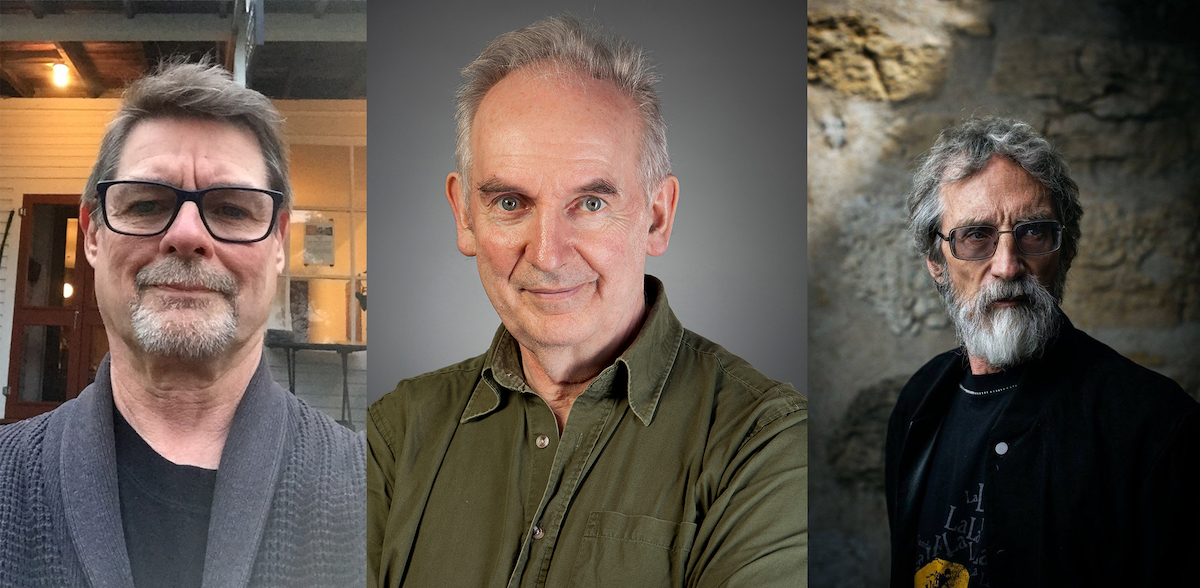
Ted Nasmith, Alan Lee and John Howe. John Howe's picture © Lucas Vuitel - lucasvuitel.ch, used with permission.
Tomorrow - Thursday, October 1st - the new illustrated edition of J.R.R. Tolkien's Unfinished Tales of Númenor and Middle-earth will be officially released, to mark the 40th anniversary of its first publication by George Allen & Unwin in 1980. This is the first time the book has been published in an illustrated edition, and HarperCollins has enlisted three of the biggest names in Tolkien art for it. Ted Nasmith, Alan Lee and John Howe have all illustrated Tolkien's works previously for HarperCollins, including variously The Hobbit, The Lord of the Rings and The Silmarillion and of course lots of calendars. Having all three included in this new edition of Unfinished Tales is a special treat and their new illustrations look amazing. I hope you enjoy my (very lightly edited for clarity) conversations with each of these artists, who all took time out of their busy schedules to chat with me.
Ted Nasmith
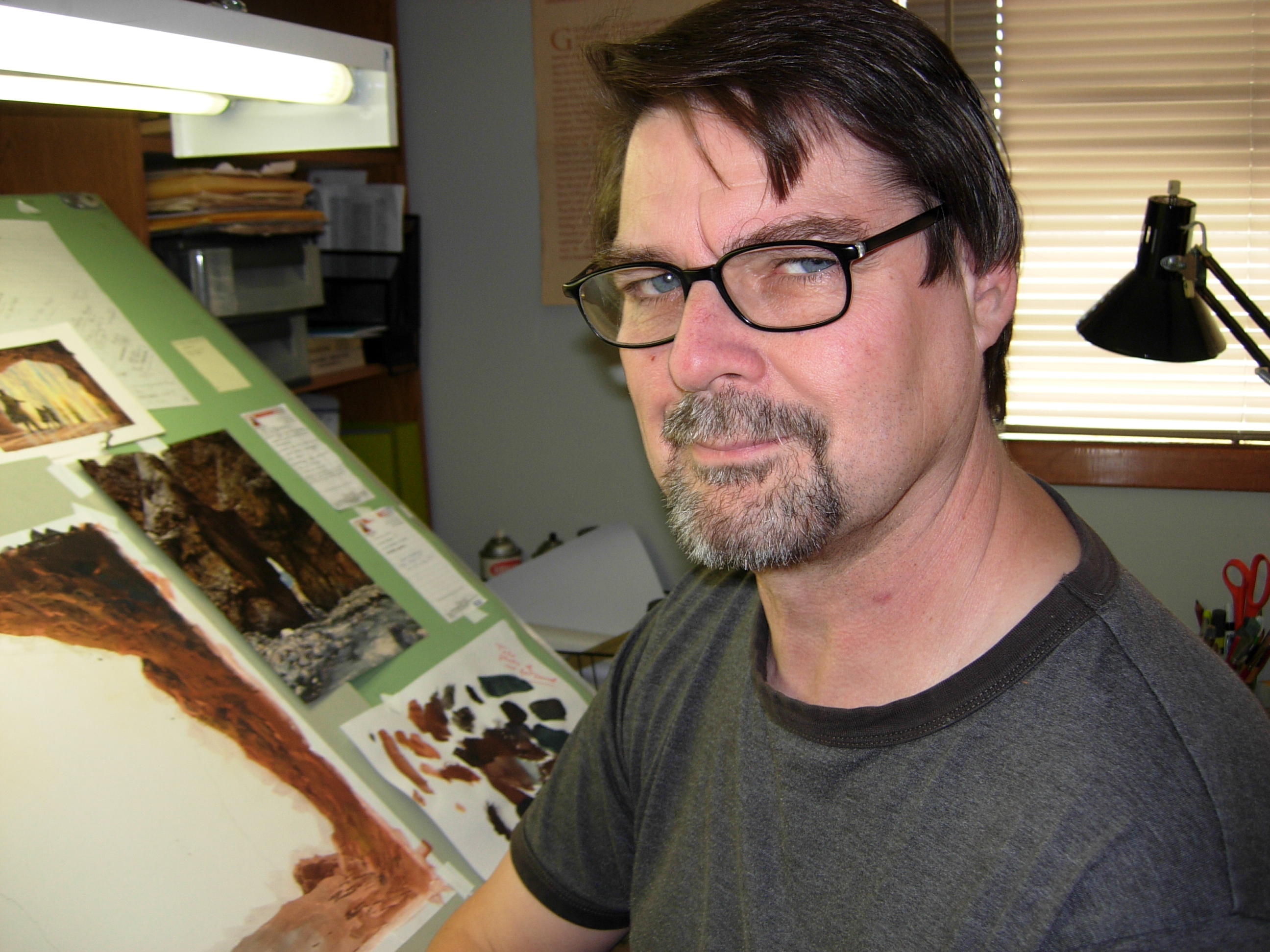
Photo courtesy Ted Nasmith
Hi Ted, and welcome! You’ve painted scenes from Unfinished Tales before for HarperCollins - how was it revisiting this subject matter, and what were you looking forward to working on this time around?
- It was truly inspirational to return to this book. Simply rereading excerpts brought the beauty and depth and richness of the tales back to the fore of my imagination. I had long since collected thumbnails and some colour roughs in the event of any opportunity to revisit it, so the announcement that I would indeed be part of its illustration came as a wonderful surprise. Among the various tales within the book, Aldarion and Erendis has always stood out, due to being the only 'full narrative' set in Númenor. But Tuor's journey, in all its full description, as well as the phenomenal details revealed in the Narn, captivate me most, with the lovely story of Galadriel and Celeborn also high on the list.
What was your process for choosing what scenes to illustrate?
- My editor at HarperCollins compiled a list of illustration subjects which I supplied some weeks earlier, and in fact worked on intensively before submitting, in order to revise some and add new ones. This was a set of thumbnails compiled by me in the 2000s when an illustrated UT was actually first floated.
Do scenes from Unfinished Tales or The Silmarillion present different challenges from illustrating the more popular Tolkien works?
- Well, as someone who has had an interest in depictions from the 'Quenta Silmarillion' or Unfinished Tales from long since, usually including a couple of scenes in each new calendar, I've recognized that the approach needs to be tailored to the tone of the book, so the result is artwork that isn't substantially different from The Lord of the Rings or The Hobbit illustrations, style-wise, but the content tends to affect the imagery such that it ought to authentically reflect the more somber and tragic aesthetics, while it has also been important to interpret the frequent images of what I see as faerie, in all their beauty.
Did any scenes present any extraordinary challenges in visualization or layout that you had to work through?
- I once painted "The Oathtaking of Cirion and Eorl", at an early point in my publishing history, but which for me was not nearly as successful as I wanted. When I was asked to revisit it, I took the challenge seriously, and worked particularly on elements of it so the effect was more true to the impression I now had of the scene. Swinging the viewpoint around to look west was key, and then it was the question of how to depict the men assembled, with Cirion's robes catching the westering sun 'as if on fire' as the central motif. Dealing with the geography was tricky, and I knew that the mountains seen to the southwest ought to be 'less white', it being summer, and their treatment was an opportunity to add some epic aspects, all of it in order to dramatize a fairly static moment, but one of key interest in the history of the 2 realms Gondor and Rohan. I changed Eorl's hair 4 times, finally settling on having the sun catch his long blonde hair, to help match the description of him as 'the Young'.
You’ve indicated many times that you would love to do a Ted Nasmith art book. Has there been any progress on this idea?
- It still lies in the realm of possibility but there is no concrete plan at this time. There are however discussions taking place about what might be the best approach in order to be in line with the legal considerations surrounding publication of copyrighted material.
You actually corresponded with JRR Tolkien when you were first starting out. How was that, and how did it affect your art?
- It inspired a young teenage artist and budding illustrator to continue his quest for recognition for a growing body of artwork worthy of the rich, deeply inspiring fantasy that Prof. Tolkien gave us.
What mediums do you like to work in most? Do you ever use computers or digital tools?
- I use some limited software in the earlier stages in order to try out variations in colour tone and other experimentation, mostly. I've never gotten into the full creation of digital art. Gouache continues to be my chief medium for paintings, with my art for A Game of Thrones (deluxe collectible edition) got me back to pencil art, especially the use of pencil on grey tone paper, enhanced by white highlights.
What other projects have you done recently, or are working on, that you would like to share?
- Over the spring and summer I turned out 3 works, privately commissioned. The first was a depiction of Ithilien, with Samwise cooking conies by the pool, the second was a cover piece for a fantasy epic novel titled A Seat For the Rabble, featuring a huge temple fire looming above a medieval village, with a girl running, and the next artwork was for a CD cover and vinyl LP project, showing a seascape of black rocks, grey seas, foamy waves, a weak sun, and a group of white-clad wizards in a conclave near the water. I'm currently working on a Silmarillion commission depicting Glorfindel and the Balrog and the scene upon the Eagle's Cleft.
You've previously painted a scene titled "Tuor Reaches the Hidden City of Gondolin" for the HarperCollins 1996 Tolkien calendar, but you repainted the scene for this book.
- As I read the passage in Unfinished Tales where Tolkien writes of Tuor that 'he beheld a vision of Gondolin amid the white snow' again while preparing for ideas for artwork, I was struck by the word 'snow'. Of course it's winter, I thought, yet based on the Silmarillion text, you wouldn't appreciate that detail. Yet of course, Tuor and Voronwë pass by the frozen Pools of Ivrin on their journey to Gondolin... Consider me a happy artist to have been able to correct this aspect in this Unfinished Tales illustration, and use the wintry colour scheme to offer a magical vision of the doomed city. And of course I paid much more attention to the description of the Gates and the assembled VIPs! That whole situation was tricky to work out. To properly do justice to that assemblage might require a separate painting, really [certainly the Seven Gates invite an artist], but for the purposes of this illustration, we needed to see some glimpse of it. Ecthelion is there, with his horse and squire, and the Captain of the Guard Elemmakil is by Voronwë and Tuor.
Alan Lee
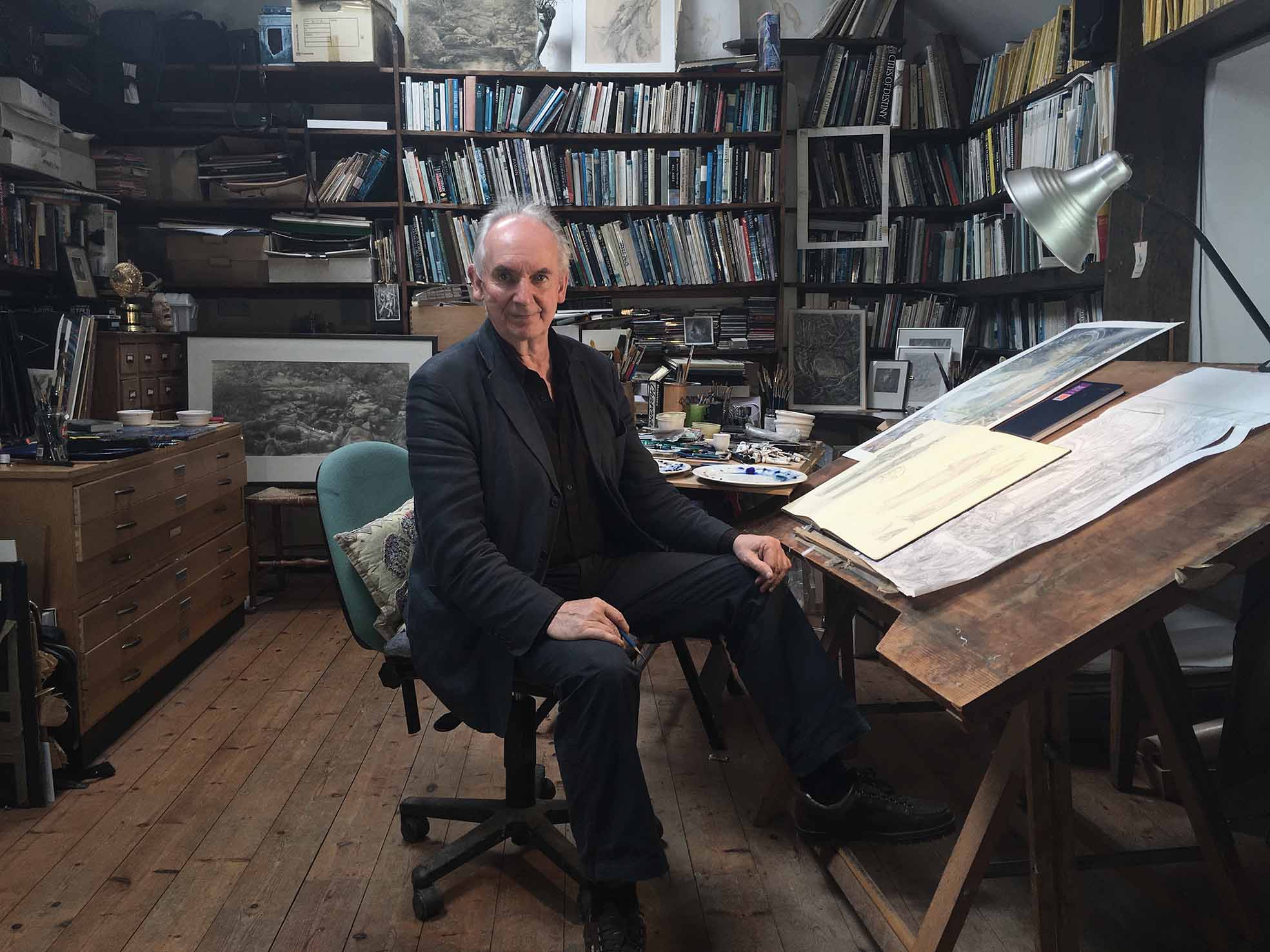
Photo courtesy Alan Lee
Hi Alan, thanks for taking some time to chat. You've spent decades illustrating Tolkien's books. What specifically attracts you to Tolkien's Middle-earth?
- Brilliant stories and storytelling, with the subject matter I’m most attracted to – myth and epic romance – set in a land which is both real and imaginary, and beautifully evoked. One of the great things for an illustrator though is that the descriptions of places and characters are quite spare and leave plenty of room for the readers imagination.
You have a great relationship with HarperCollins and the Tolkien Estate, having illustrated The Hobbit, The Lord of the Rings, and the three 'Great Tales' of the Elder days. Christopher especially loved your vision for Middle-earth.
- The nicest thing that Christopher said about my interpretations was that they didn’t change his father’s vision of Middle-earth, they just made it feel larger.
What process do you go through to pick what scenes you illustrate for Tolkien's books?
- This depends on the printing process. If the colour plates are printed on art paper, they can only go in particular places due to the way the books are bound, but if they are printed on the same stock as the text then they can go anywhere. So it's a combination of those factors and a feeling for where an illustration would be welcome. The main thing for me is to respect the text, and not try to compete with it – setting the scene and trying to create an atmosphere. I concentrate more on the landscapes and places rather than the characters and the action.
You have six paintings in this new edition of Unfinished Tales - How many are new paintings?
- There are six interior colour illustrations and one more used on the cover, and as a print in the deluxe edition. I’ve also done three small pencil vignettes. One of the interior illustrations was done for the Children of Húrin in 2007 but not used in the book.
For your illustration appearing on the dustjacket of the new edition of Unfinished Tales - what was your inspiration for the ship style?
- There are a few references to the appearances of the ships in the text; they are tall, many masted. I felt they should be lateen rigged, and quite heavily decorated, and tried to introduce some elements that connected them to Roman and Egyptian ships, so they are a mixture of different influences without being copies of anything we know from archaeology.
Which scene were you looking forward to illustrating the most?
- I was quite taken by the story of Amroth and Nimrodel.
Did any scenes present any challenges in visualization or layout that you had to work through?
- The battle of the Fords of Isen was a big subject – perhaps better handled in a landscape format – and I painted it at a large size as I wanted to do the figures at a size I was comfortable with. I ended up spending a huge amount of time on it.
Do you ever use computers or digital tools when working on an illustration?
- Yes, I scan the pictures at home to deliver them as digital files and that often involves some adjustments and additions. For example, the picture of Tuor escaping the storm is an insert into another one of Ulmo, so you see two moments in the story at the same time, and those elements were put together in photoshop.
What other projects have you done recently that you would like to share?
- There is great reading of The Hobbit by Andy Serkis which has just been released as an audiobook, and I did a cover for that.
John Howe
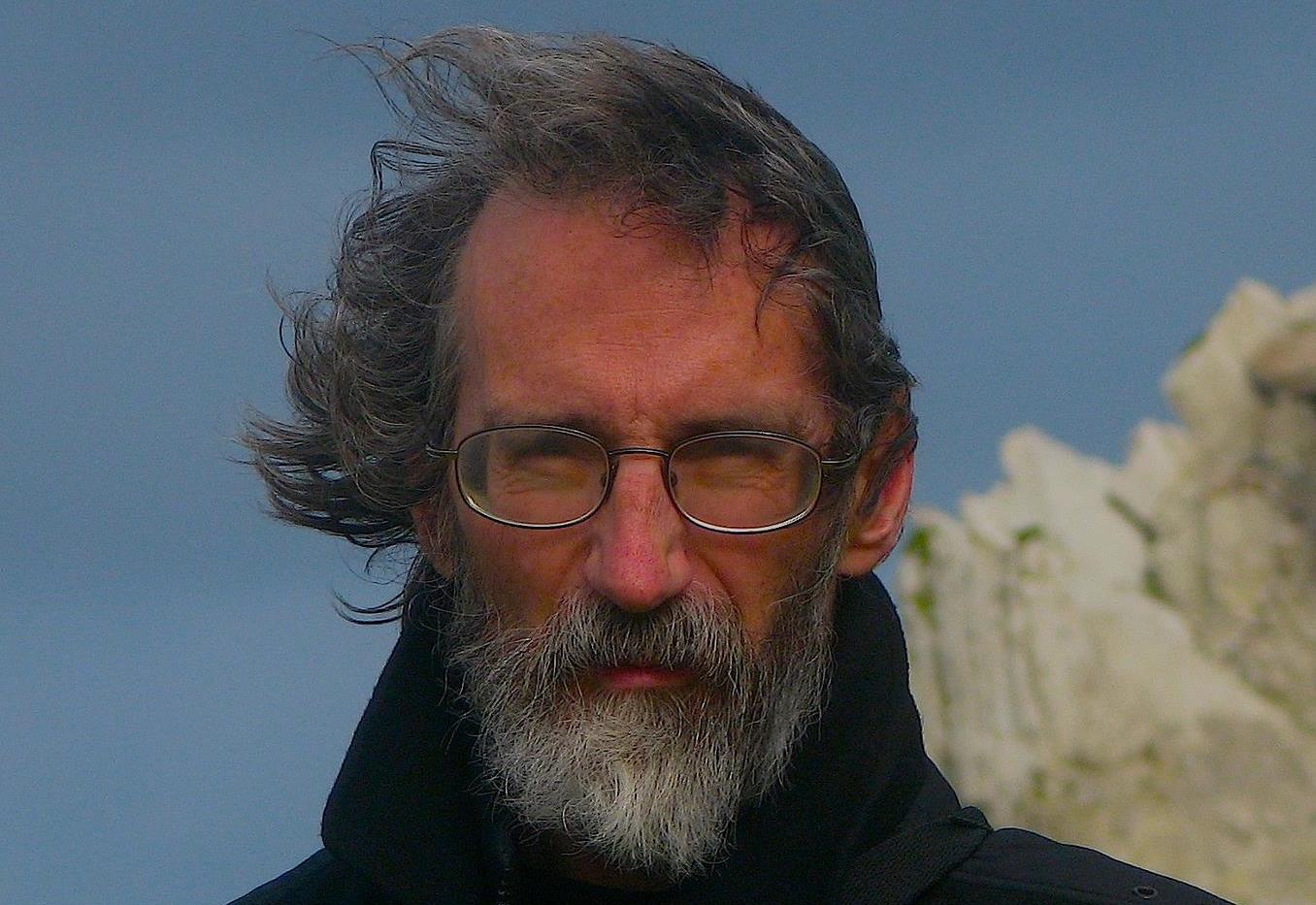
Photo by Fataneh Howe, courtesy John Howe
Hi John, thanks for participating. I understand that you made six new pieces for the new illustrated edition of Unfinished Tales. What was your process for choosing what scenes to illustrate?
- Dividing the Three Ages between three illustrators must have been quite an editorial puzzle to solve! We each received potential lists of subjects and proposed subjects of our own and the publisher worked out the best plan. (I was eager to do the Blue Wizards, for example, but Ted beat me to it.) I was equally eager to do a maritime scene, with all the wonderful coastlines of New Zealand that I had been hiking along over the previous months. I also chose a scene that allowed me to use photos I have taken in Wistman's Wood in Devon. I have to confess that I truly indulged myself for at least half of the illustrations. For the remaining three, as choices narrowed, it was really a question of searching through the texts and sending sketch proposals to the publisher.
Do you have a personal favourite scene that you were looking forward to illustrating?
- I am going to do those Blue Wizards anyway, I think. There are so many scenes in Unfinished Tales I would still love to do.
Did any present any extraordinary challenges in visualization or layout that you had to work through?
- The broad scope of Middle-earth combined with the relatively small number of illustrations offered a wide choice of subject and treatment. I really enjoyed doing the painting of the Battle of Unnumbered Tears, though honestly, I could happily go back and do it again half a dozen times, choosing different angles, focusing on different episodes. I suppose the biggest challenge comes from eliminating a plethora of options and choosing only one.
Visualising Tolkien, I truly believe, is a process not unlike his own transcribing of his world, with the obvious advantage of having his texts to work from. It means illustrating between the lines, casting one's net farther out, searching for the credibility that is inherent in his work, with the disadvantage of not being to always leave elements to the imagination. This said, any illustration should be an invitation, with space for the viewer to bring his or her personal experience, both in relation to the reading experience and in a wider context, to complete the picture.
You've been immersed in Middle-earth for most of the past two decades (or more). What else have you worked on to keep from getting burned out?
- Illustration work often comes with little obligation for consistency, so "established" characters and scenes are perpetually up for new interpretations. There is no such thing as an "official" version, thank goodness!
Tolkien’s work always presents challenges. The richness and complexity of his references sends any attentive illustrator not only farther afield in historical research but also deeper into that interior space where inspiration resides. I have always said that inspiration and information go hand in hand, though they take different paths and require a different sort of engagement. Information is a permanent quest for everything. Any maker of images is open to the world, because that is where the images are. Inspiration is what happens when you switch off all conscious thought an allow the imagery to appear. It is there already of course, along with an infinity of possibilities, your pencil has simply just not yet uncovered it.
Much research has been done to pinpoint Tolkien's "sources", as if it were possible to flag literally everything he wrote on one map. While tempting (and references to specific places in Tolkien's life are plentiful if even just considering his walking tour of Switzerland), but to wish to tie literally everything he wrote to a place or a date, while it does sell him short, is nevertheless an indirect homage to the credibility and powerful thoroughness of his fantasy world-building. Everything he describes seems so real it must logically be based on personal experience. Tolkien accomplishes this by engaging us emotionally, not intellectually. He rarely describes, with a few notable exceptions, the salient features of a landscape or a city. He instead provides us with a window into the mind of his protagonists, and describes their feelings when seeing it.
Equally, to wish to pin everything to a map or to his personal peregrinations is to dismiss Tolkien's perpetual search for archetypes, for features, creatures and characters that embody qualities larger than any individual and orient us towards the collective experience. Tolkien is a path to universality through anecdote.
This judicious use of references leaves much open to the interpretation of the reader, and ample geography for an illustrator to wander in at will. In such circumstances and engaging company, it is hard to grow jaded, and to become weary of Tolkien's universe would any display a personal shortcoming, not inherent repetitiveness of the material..
The wonderful thing about inspiration is that while it requires a context to fully flourish, there is little logic to it. Tolkien’s invented languages are an amusing combination of philological rigour and academic consistency and of words that he rather quite liked, for which be bent the rules in order to fit in. Visualising follows the same process of intimate conviction and pure happenstance. There has been a lot of New Zealand in my work since spending time there, as there is a lot of Switzerland. Other elements outside my personal experience are the result of haphazard reading a net surfing. I have learned that if something appeals to me visually, I will discover many other levels of interest – historical and cultural – if I dig a little. I am grateful to be illustrating an author that encourages this kind of visual quest.
You've worked collaboratively for much of that time with various film and TV teams. Do you feel those collaborations have influenced how you approach illustrating Middle-earth?
- Film and movie projects certainly have left me with a preference for landscape formats! Also, given that many of the aspects of a completed illustration – layout, lighting, costume, accessories, architecture, armour, actor direction, makeup and dozens more, all the things one takes for granted as part of an illustration – are distributed to other departments as separate tasks, any film design work is ultimately a sort of paid learning vacation, where you are expected to enlarge your horizons, search new ideas, approach all challenges with originality and transversal thinking. It is enriching and intensely collaborative. Illustration is a more solitary pursuit. It is wonderful to have the opportunity to switch from one to the other.
What mediums do you like to work in most? Do you ever use computers or digital tools?
- I prefer inks and watercolours, but do a good deal of digital work as well. Most work for highly collaborative projects such as films is digital. On the other hand, I prefer more traditional methods for illustration work.
What other projects have you done recently, or are working on, that you would like to share?
- I guess you missed The Witch-King statue. ? I have been working with a Beijing company to produce a line of collectible statues, both Tolkien-themed and from my own work. The first statue went on line for pre-order a month or so ago, a 300 copy limited edition, and sold out in literally one second (There must have been a lot of people with fingers poised over the "send" button.) We are working now on the second and third ones.
I have also begin a very stimulating and exciting collaboration with Jaquet-Droz, a local watch company. All incredibly miniaturized and precise, it really is another world. Working on fantasy themes with the constraints of watch-making is truly rewarding.
I have also been very active with the region of the Alsace in France on a program to promote their rich heritage of castles and ruins (There are 500 sites in the Alsace.) It involves a lot of cross-media development, new apps and finding a way to make the access to these places exciting and informative. I have also been involved in a few urbanism and architectural projects, both here and abroad.
I am also working on a couple of books, so there is a lot of writing and painting in view over the next year or so.
[Update] I had unintentionally included some additional discussion that John and I had, which he had not intended to be published. These have been removed, with my humble apologies to John.
I want to thank all three gentlemen again for their time and effort answering some questions about their work. If you are interested in the new edition that is coming out tomorrow, below is some information on the HarperCollins editions and a few links where they might be ordered. Most major booksellers should be carrying them, and editions in other countries should be forthcoming soon as well.
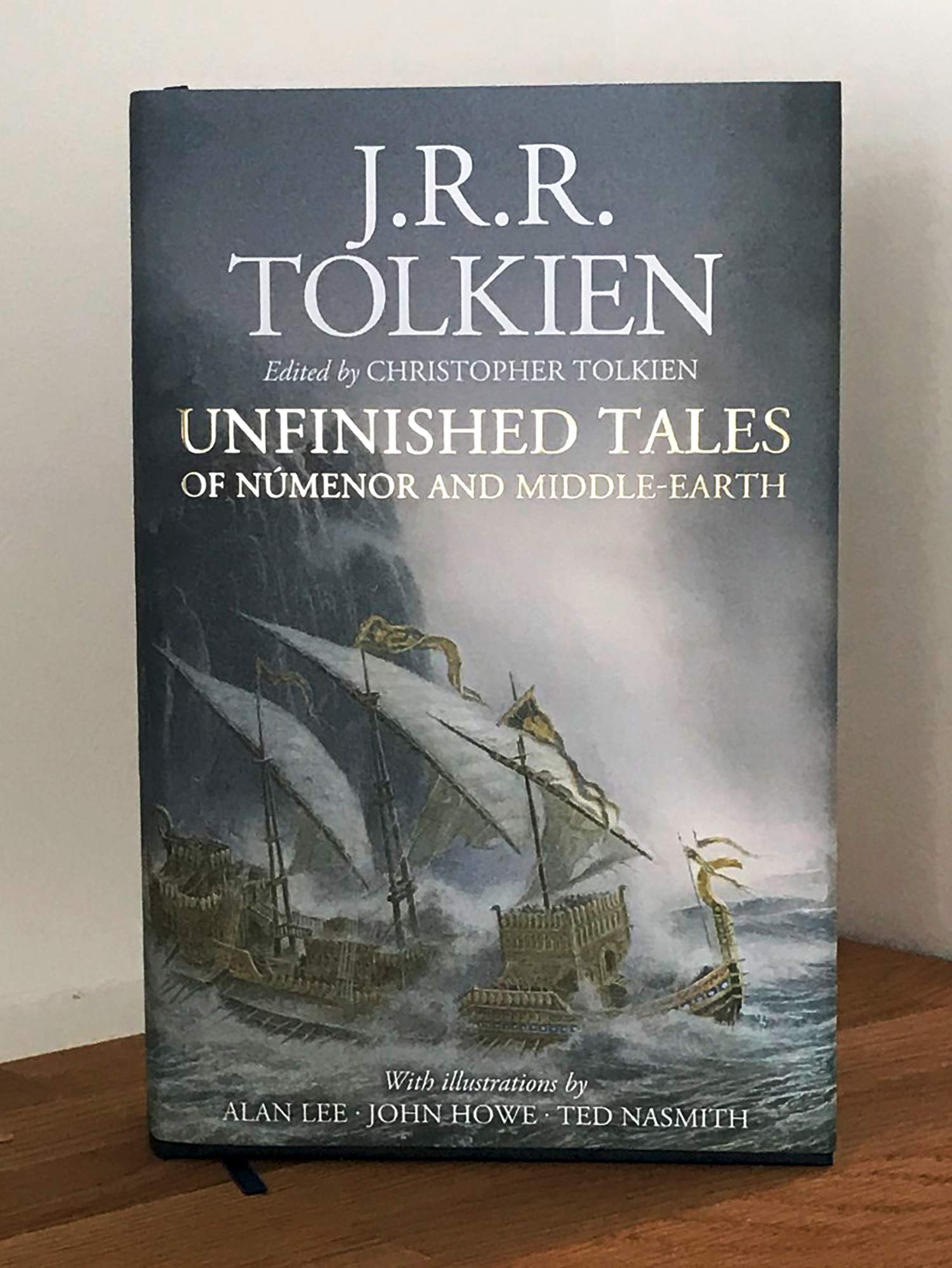
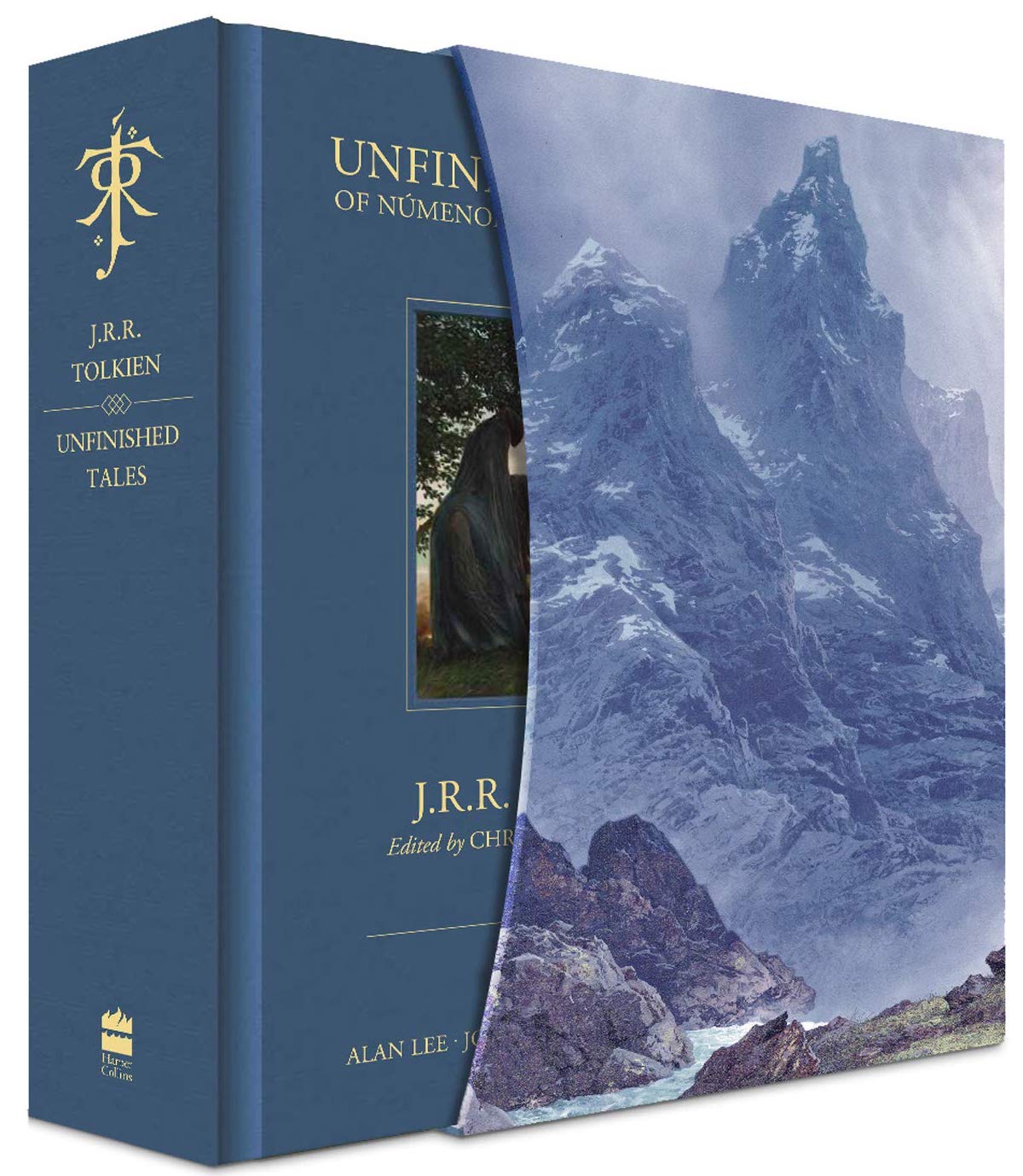
Standard edition:
ISBN: 9780008387952
Publisher: HarperCollins Publishers
Pub date: 01 Oct 2020
Amazon UK (affiliate) link: https://amzn.to/2G8Di7R
Deluxe edition:
ISBN: 9780008387969
Publisher: HarperCollins Publishers
Pub date: 01 Oct 2020
Amazon UK (affiliate) link: https://amzn.to/3idsy54












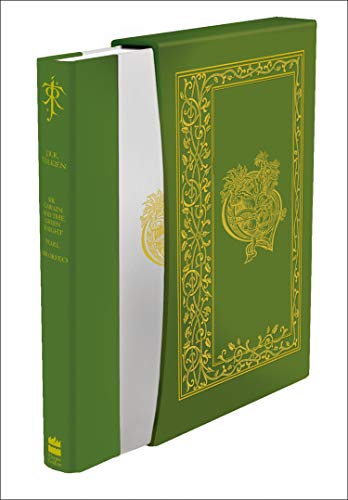
 2
2 67
67